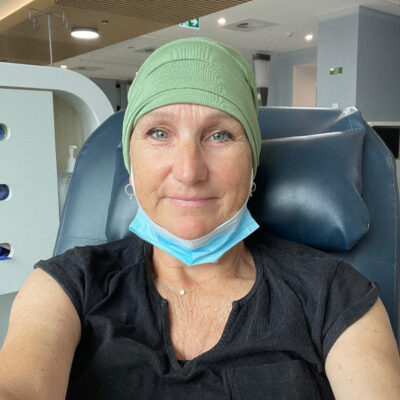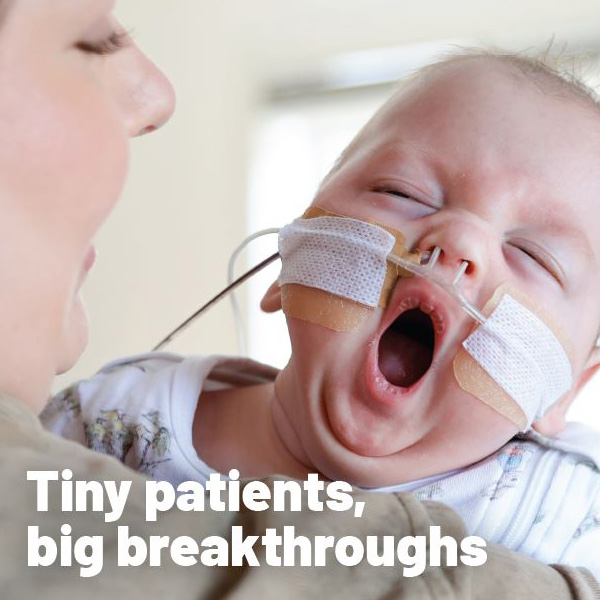Fighting ovarian cancer at the front line
By Hudson Institute communications
Ovarian cancer is responsible for more deaths than any other gynaecological disease, yet it’s known as the ‘silent killer’, due to an absence of symptoms and a devastatingly low survival rate of less than 50 per cent.
Our leading ovarian cancer researchers are progressing solutions to help these women – thanks to support from the Ovarian Cancer Research Foundation and Witchery’s White Shirt Campaign.

Launched today and culminating on World Ovarian Cancer Day on Wednesday, 8 May, the White Shirt Campaign raises the funds needed to support our ovarian cancer researchers.
This year, Hudson Institute ovarian cancer researcher, Dr Maree Bilandzic, joins some of Australia’s most influential women and icons in our community as an OCRF ambassador for the White Shirt Campaign.
2019 White Shirt Campaign Ambassadors
- Dr Maree Bilandzic, Hudson Institute of Medical Research
- Former Deputy Prime Minister, Hon Julie Bishop MP
- Actress Jessica McNamee
- Journalist and presenter Brooke Boney
- Media personality Anna Heinrich
- Health and fitness rising stars Steph Claire Smith and Laura Henshaw
- Leanne Flynn, patient and OCRF ambassador
Ovarian cancer
Every year, more than 1600 Australian women are diagnosed with the disease and it claims the lives of more than 1000.
It is known as the silent killer, as women with early stage ovarian cancer commonly do not present with any symptoms. This means the disease is often not detected until the advanced stages when it has spread beyond the ovaries, with the five-year survival rate a devastatingly low 45 per cent.
Ovarian Cancer at Hudson Institute
Ovarian Cancer Biomarkers Research Group
Dr Andrew Stephens and his team have started a clinical trial for an ovarian cancer early detection test they developed, thanks to generous funding from the Ovarian Cancer Research Foundation (OCRF).
Unlike a mammogram for breast cancer, or the cervical cancer screening test, there is no early detection test for ovarian cancer. The disease often comes with vague symptoms, such as bloating, abdominal pain, fatigue or loss of appetite – all of which may be attributed to other conditions. Sadly, this means that ovarian cancer is often not detected until the advanced stages.
The three-year trial involves around 300 at-risk women with BRCA1 or BRCA2 gene mutations and will test whether the method developed by Dr Stephens’ team detects early stage disease for the most common type of ovarian cancer and pre-cancerous lesions.
“Our ‘Active Ratio Test’ measures changes in a key immune process, to give an indication of the presence of a growing tumour,” Dr Stephens said.
“We are excited about the potential for the test to detect the cancer when it is still confined to the ovary and at its most treatable. Ultimately we want to get the test into a routine screening program as a regular health check for women.”

Dr Maree Bilandzic has discovered a mechanism by which cancer cells invade healthy tissue. Her work is focused on developing new drugs to close this ‘loophole’ to stop tumours spreading and at the same time prevent chemotherapy resistance.
“We will trial a new and exciting approach to target ovarian cancer cells. This innovative approach has the potential to stop the growth and spread of tumours at initial diagnosis or relapse, and increase survival statistics for ovarian cancer patients,” Dr Bilandzic said.
Hormone Cancer Therapeutics Research Group
Dr Simon Chu and his team are working to improve treatment for an uncommon hormone-driven type of ovarian cancer, known as granulosa cell tumours (GCT).
For women whose ovarian cancer is detected at a later stage, or those women who experience recurrent disease, new treatments are needed to ensure that they survive for longer and have the best possible quality of life. GCT are often diagnosed earlier than the more common ovarian cancers, however they have a high recurrence rate and often resurface as aggressive tumours anywhere up to 20 years later.
Dr Chu’s team is working on a ‘double hit’ by combining an anti-diabetic drug with an anti-cancer drug targeting a protein known as XIAP, which drives GCT growth.
“This study could fundamentally change the way we treat GCT through a targeted approach. These two drugs are already in clinical or pre-clinical use for other diseases. We are optimistic we could more quickly move these drugs from a testing phase into the treatment of ovarian cancer,” Dr Chu said.
Contact us
Hudson Institute communications
t: + 61 3 8572 2697
e: communications@hudson.org.au
In this article
About Hudson Institute
Hudson Institute’ s research programs deliver in three areas of medical need – inflammation, cancer, women’s and newborn health. More
Hudson News
Get the inside view on discoveries and patient stories
“Thank you Hudson Institute researchers. Your work brings such hope to all women with ovarian cancer knowing that potentially women in the future won't have to go through what we have!”









